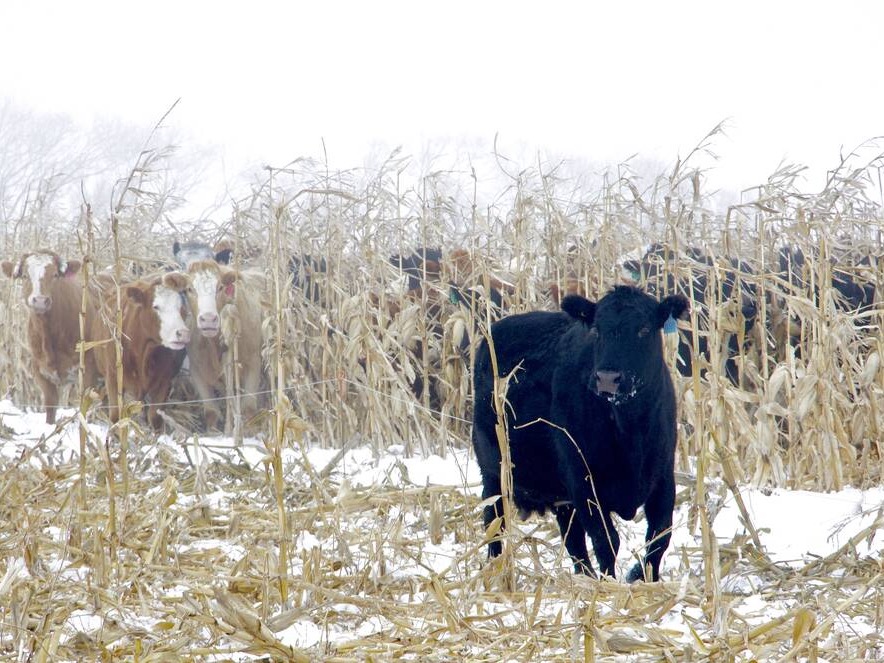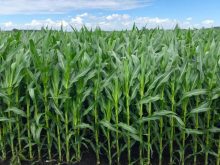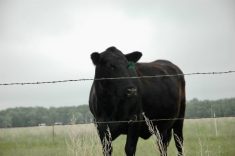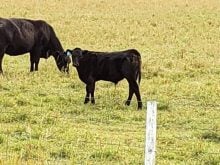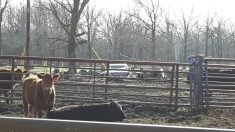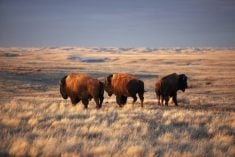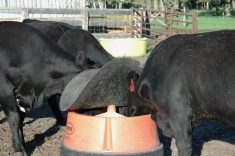Corn fields grown especially for overwintering beef cows are a patchwork across our Prairies. Whole corn plants can provide substantial nutrition to maintain precious body condition of gestating beef cows.
Yet, nobody should open the gate to any field and allow cows to stampede into it. That’s because there are still some issues in order to make grazing standing corn a good winter forage. I recommend that a mid-winter review of any such feeding program be made to assure all cowherd requirements for essential nutrients are met.
For example, the higher dietary energy of standing corn makes it nutritionally more attractive as compared to other common overwinter forages, as illustrated in the table here.

I recognize that the nutrient requirements of mid-gestation cows need 52-55 per cent TDN and about eight to nine per cent crude protein on a daily basis to maintain an optimum body condition of 5 to 6 and an early-term fetus.
Read Also

Fendt takes a combine on the road in the U.S.
Putting an Ideal combine in fields across different regions has given the brand a chance to prove that the combine is capable of performing well in a variety of conditions.
As they move into the last trimester of pregnancy (where 75 per cent fetal growth occurs), pre-calving cows need 56-58 per cent TDN and about 11-12 per cent protein. It seems to me corn grazing will cover both phases of dietary energy requirements.
Unfortunately, cows grazing standing-corn acres as their source of overwinter feed will barely meet crude protein requirements during mid-gestation and fail to meet them during late-gestation.
READ MORE: Intercropping corn for better shoulder season grazing
That’s why there are many commercial protein supplements that help complement a gestation beef feeding program based on grazing corn fields. For example, many producers purchase protein range cubes/pellets, often made from high-protein distillers’ grains or 20 to 30 per cent protein cattle lick-tubs, that can be placed for every 25 beef cows throughout the cornfield.
Supplementing protein to grazing corn seems like a straightforward fix; however, I’ve talked to many producers and they tell me there are other unique hurdles. Here are some of their experiences to overcome them.
Field acidosis
One producer moves his 150 black Angus cows, from one grazed paddock to a fresh paddock of 10 acres, every week. In this way, he prevents acidosis upsets, since palatable ears of corn are eaten first (two to three days), then the leaves and thin stalks (two to three days), and finally leftover hard stalks.
Mould and mycotoxins
During a particularly wet fall, I drove past a field of standing corn in which its leaves were literarily blue with surface mould. To prevent abortions possibly caused by potential mycotoxins, I formulated a mineral with mycotoxin binders that was fed to this cowherd grazing within its blue corn field acres.
Water intake
Many producers rely upon adequate snowfall throughout the winter to meet the natural water requirements of their grazing beef cows. In one particular case, there isn’t enough snow, so the producer dug a water line and placed an accessible waterer along the corn field near his home farm.
Mineral program
Corn plants are notoriously low in calcium content. Since a beef cow requires up to 30 grams of calcium per day (as well as other macro- and micro-minerals and vitamins) a well-balanced high-calcium/modest phosphorus commercial mineral should be provided at 70 to 100 grams per head per day.
Cold weather
As the winter weather becomes much colder; the beef cows’ dietary energy requirement, just to stay warm, increases by two per cent for every 1 C drop in temperature below 0 C. This means that when the outside temperature is -25 C, the cow’s energy requirements increase by 50 per cent. To remedy this issue, many producers provide energy-enriched supplementary feeds.
One producer told me that he did not set aside and grow 200 acres of standing corn fields that he normally would have planted in the last 10 years. Instead, he planted and set up barley swaths (nutrient value also outlined in the table here).
The reason for the switch: three years of drought had led to not enough corn biomass on its own merit to overwinter his 350 beef cows.
The way this producer and other people still assess it, grazing standing corn is a good forage to overwinter beef cows. Its success depends upon how well its nutrition (and overcoming hurdles) keep the cow herd in good body condition until calving time — more specifically, when a healthy cow gives birth to a vibrant newborn calf.


